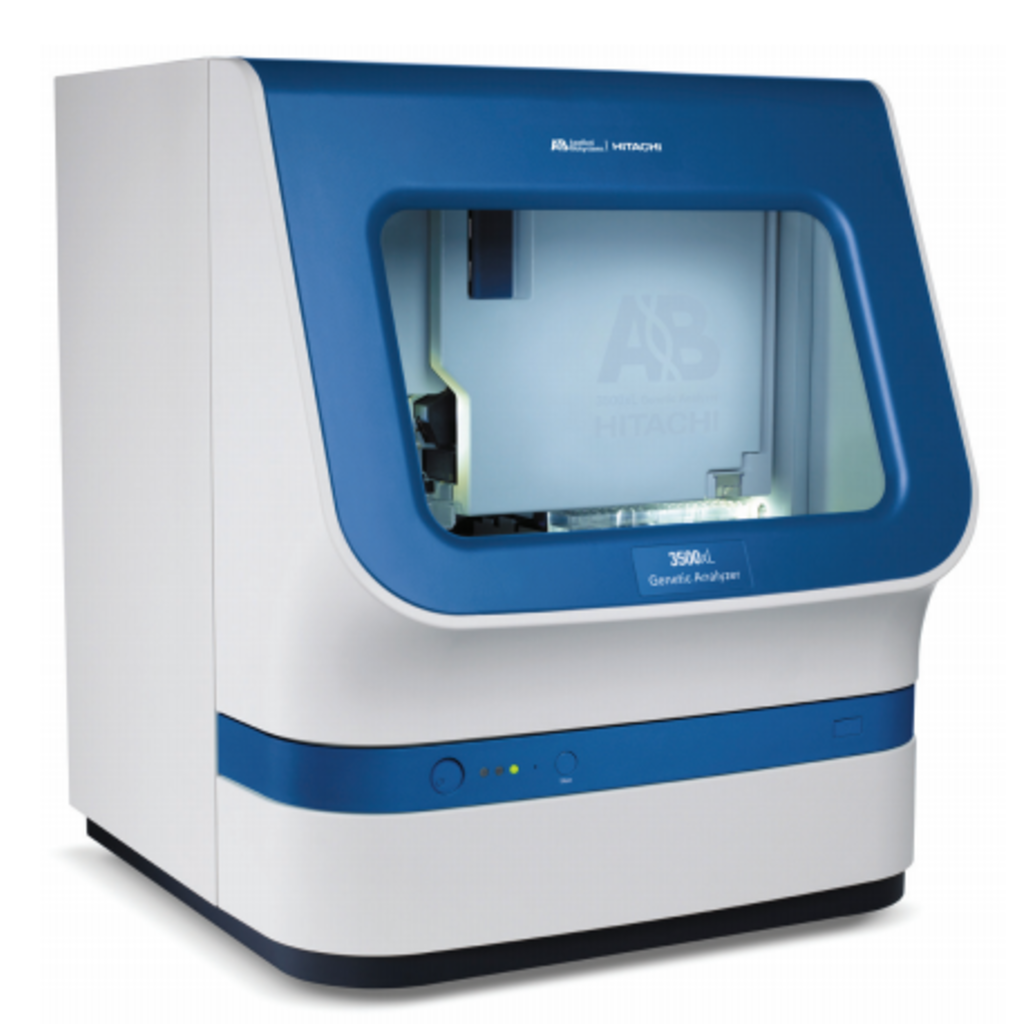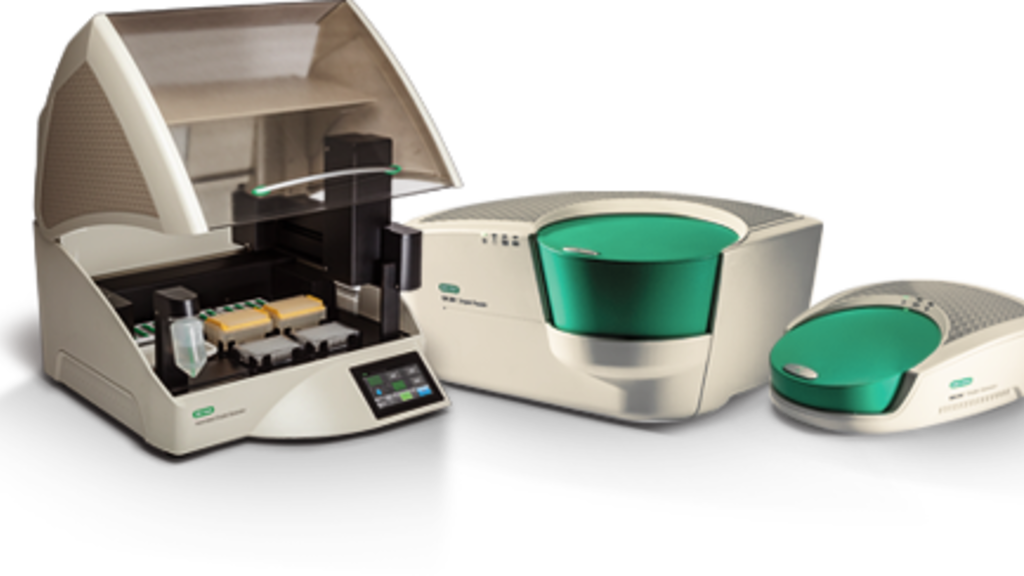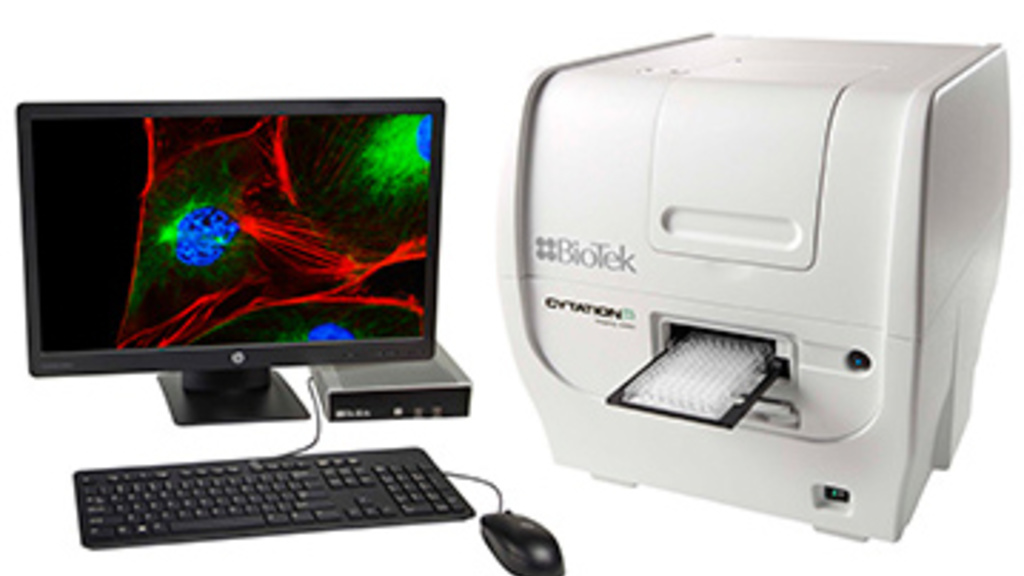Main navigation
Current equipment
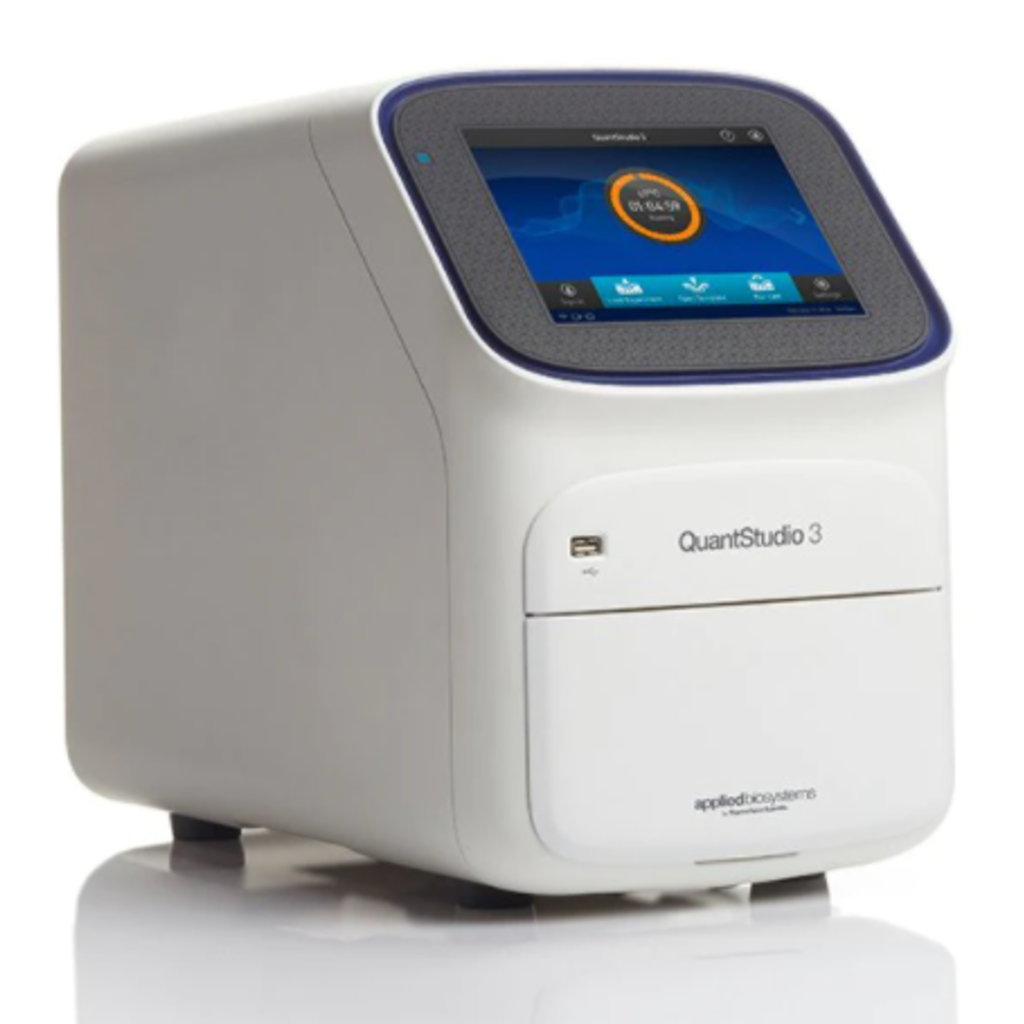
Applied Biosystems QuantStudio 3
The Applied Biosystems QuantStudio 3 system for real-time PCR is capable of running 96 samples. Its fixed block accommodates 0.1ml sample plates, and has 3 VeriFlex temperature control zones. It can handle multiplexing of up to 4 targets. The user-friendly interface of QuantStudio Design and Analysis software makes it easy to set up your reaction. The software can also perform a variety of automated standard or custom analyses, or you can export raw data.
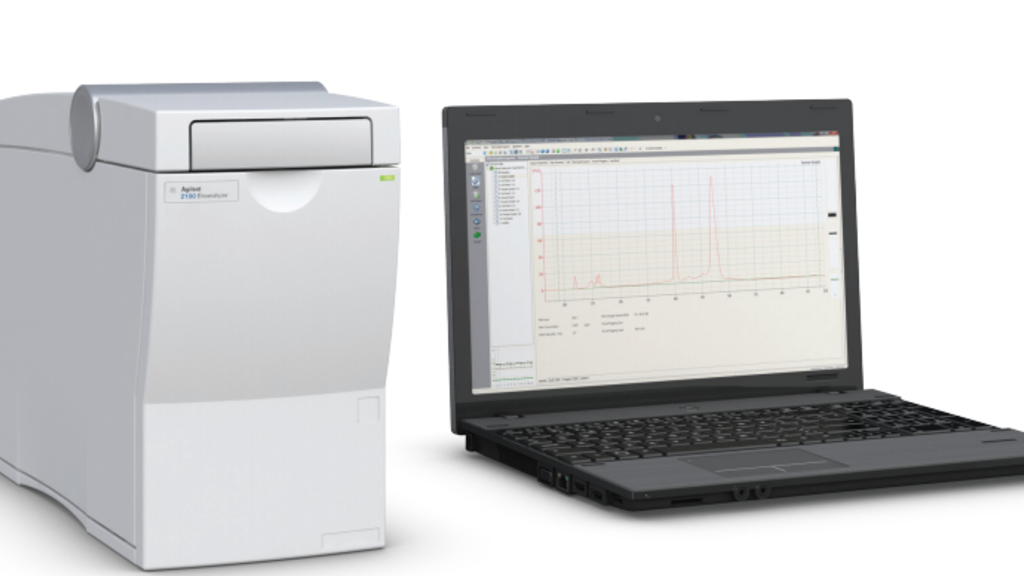
Agilent BioAnalyzer 2100
The Agilent BioAnalyzer 2100 is an automated capillary electrophoresis system used to evaluate the quality of a sample containing DNA, RNA, or proteins. It uses a microfluidics system, which greatly reduces the amount of sample required for analysis as compared to traditional electrophoresis. This is a full-service machine.
See service for sample submission procedures.
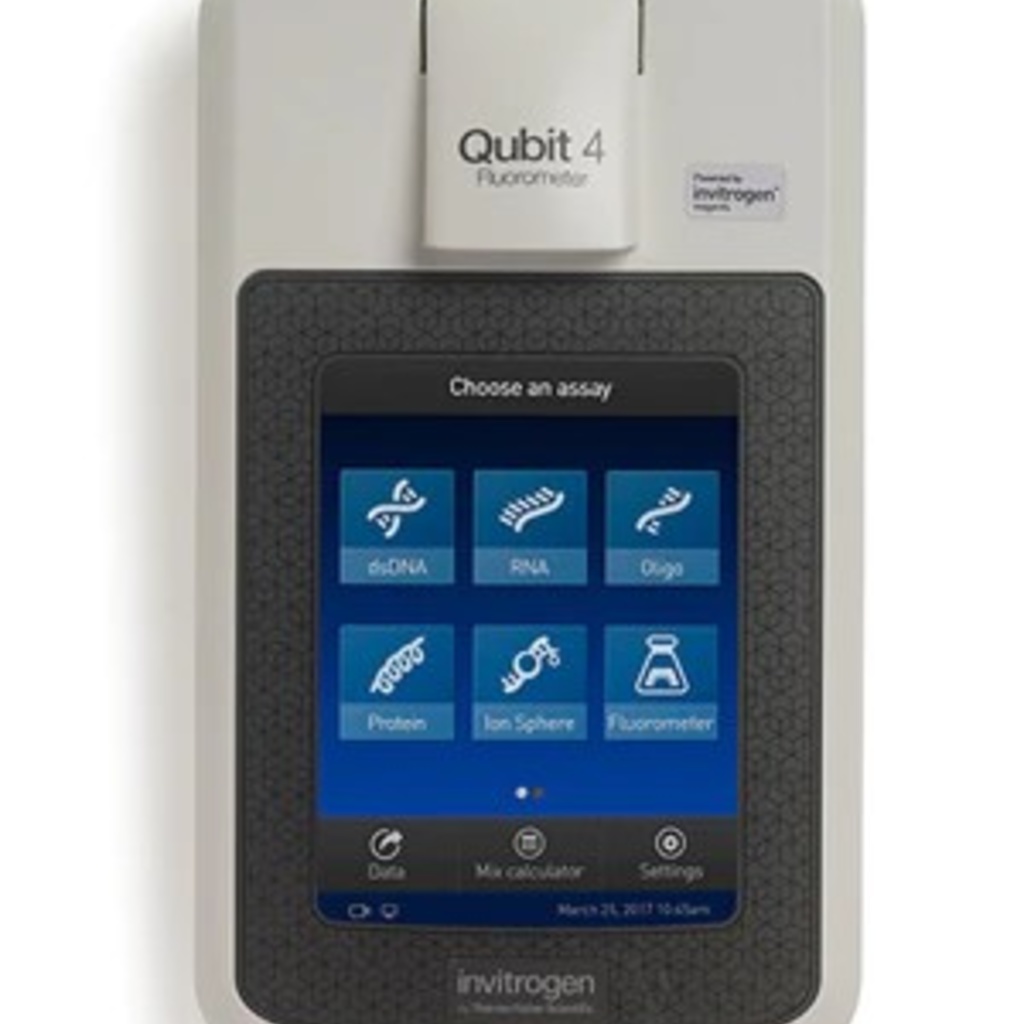
Invitrogen Qubit 4
This all-in-one fluorometer by Invitrogen can perform rapid and highly accurate assays to quantitate nucleic acids, proteins, or ion sphere particles in a sample. The Qubit can measure nucleic acids with as little as 0.1 ng added to the assay. The proprietary Qubit nucleic acid assays require only two standards, which come premixed to reduce error, and there are pre-set protocols in the machine to use with these kits. The Qubit can also run on fluorometer mode using nucleic acid-binding fluorescent dyes such as PicoGreen or RiboGreen, where the user can set up an appropriate range and number of standards suited to their samples.
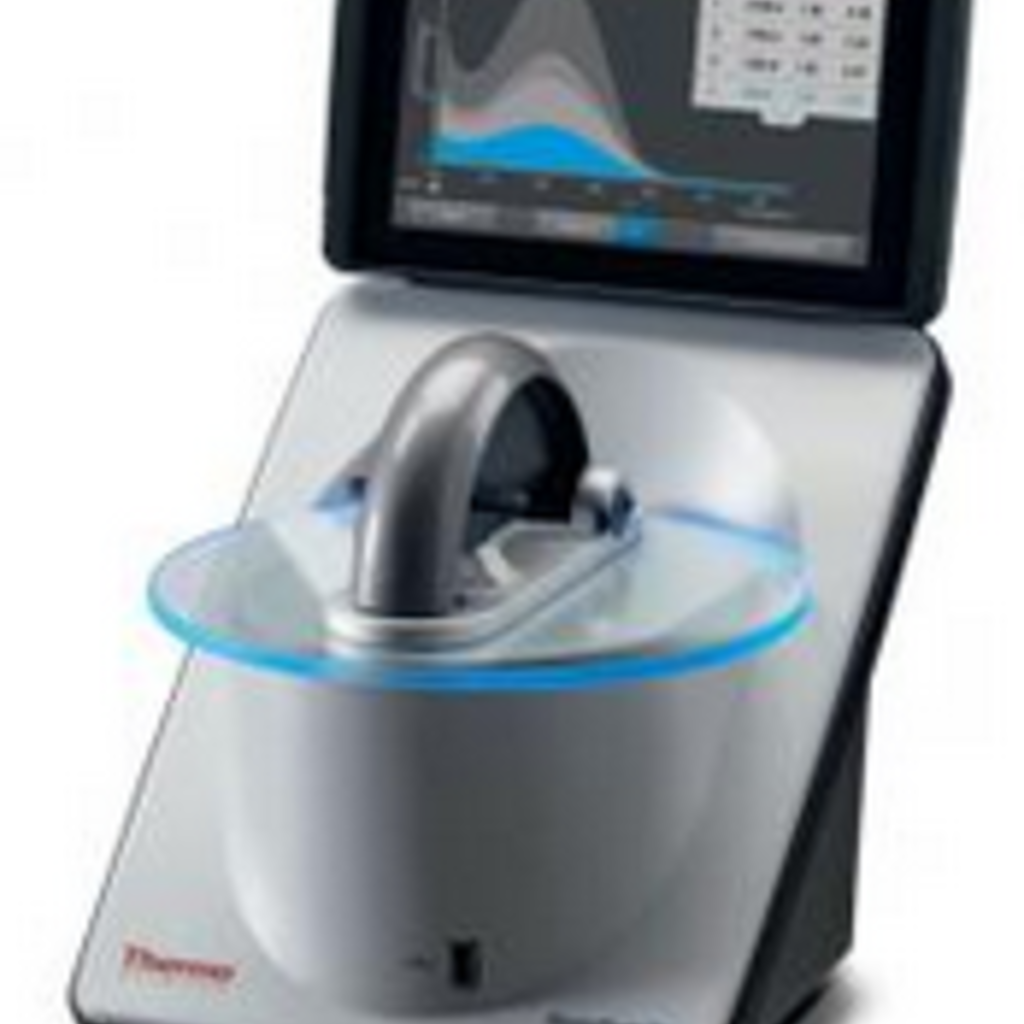
Thermo Scientific NanoDrop One Spectrophotometer
The NanoDrop One is a spectrophotometer that allows for measurement of only 1.5 ul of sample. The instrument is used to measure the concentrations of nucleic acids (dsDNA, ssDNA, RNA, oligo DNA, oligo RNA, and labeled DNA for microarray) and protein (A280, A205, BCA Bradford, Lowry, and Pierce 660). The software includes Acclaro Sample Intelligence technology with the measurements of each sample, which can help with contaminant identification. Output includes the sample concentration and the 260/280 and 260/230 ratios in a table format. Users also have the option of downloading the raw data to recreate the plot of the spectral scan.
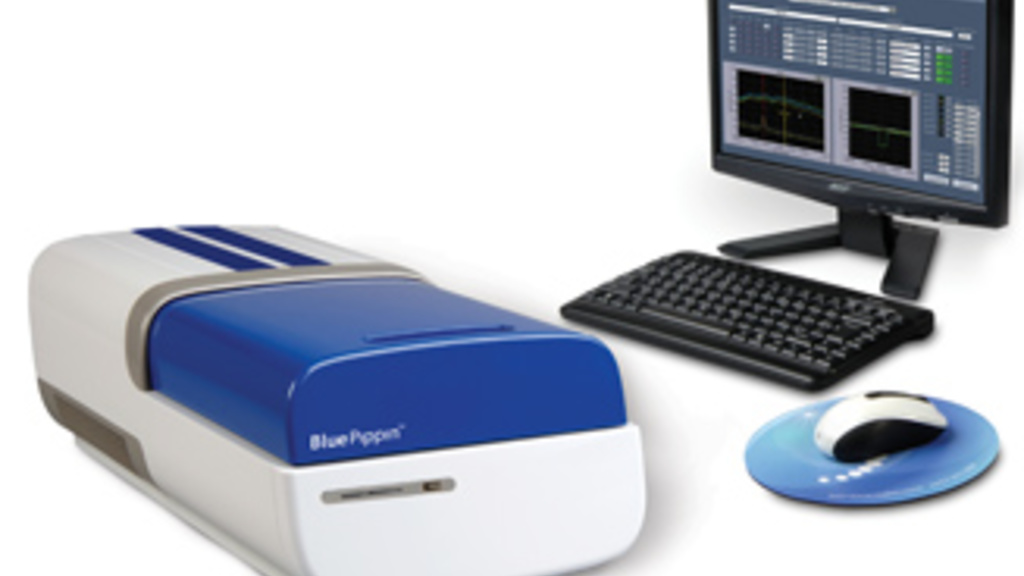
Sage Science BluePippin
The BluePippin from Sage Science is an automated DNA size fractionator, enabling isolation of specific size ranges of DNA fragments from a sample. This machine performs electrophoresis on 4-5 samples in parallel using separate lanes of a cartridge, eliminating the possibility of cross contamination that can occur when cutting bands out of a gel. The BluePippin elutes the targeted fragments in buffer, so no additional gel extraction protocol is required. Used as part of a workflow for NGS, the BluePippin can result in a significantly higher proportion of reads of the desired length.
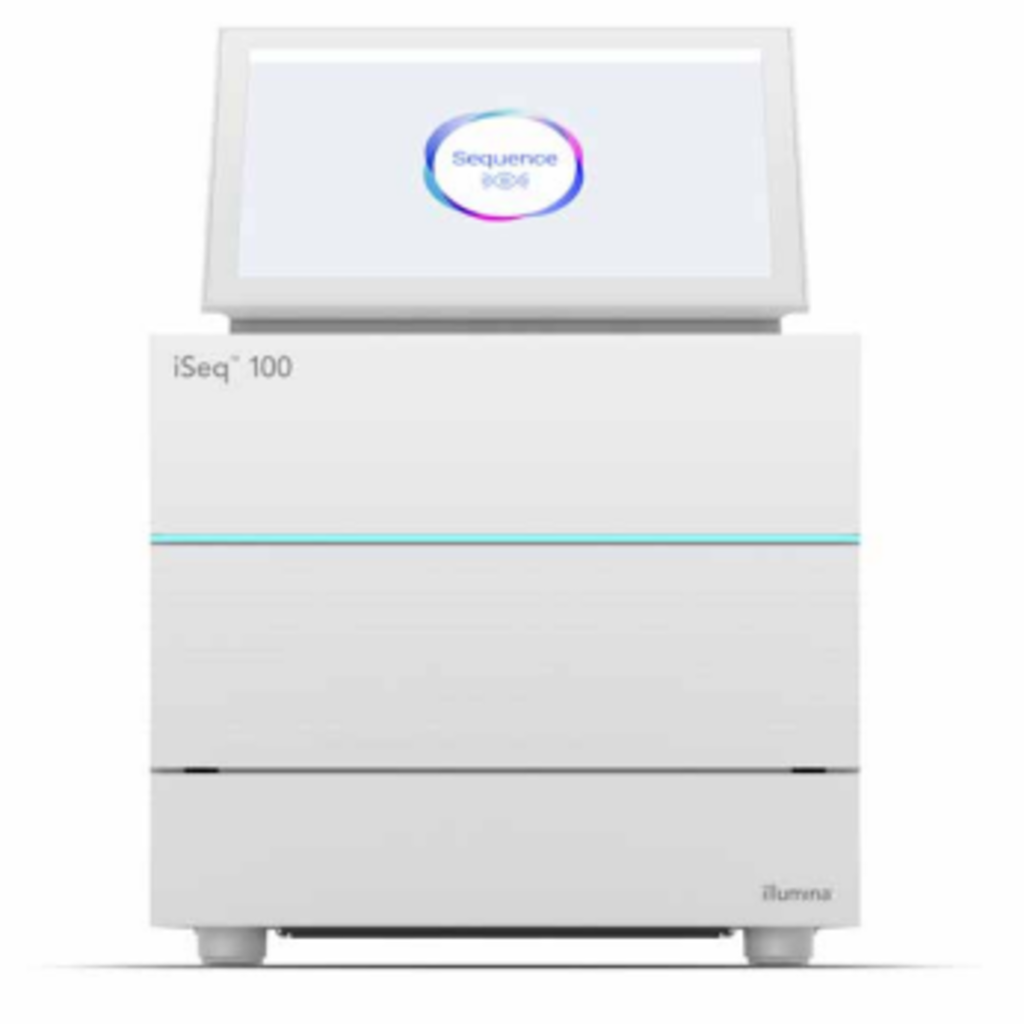
Illumina iSeq 100
The Illumina iSeq is a benchtop sequencer that can generate 1.2Gb of data in only 17.5 hours.
This machine is ideal for small NGS projects, such as small genome sequencing, targeted sequencing, or small panels.
The library preps for the iSeq are identical to the NovaSeq, which means the iSeq can also be used to check the balance of pooled libraries before running a large project on the NovaSeq 6000.
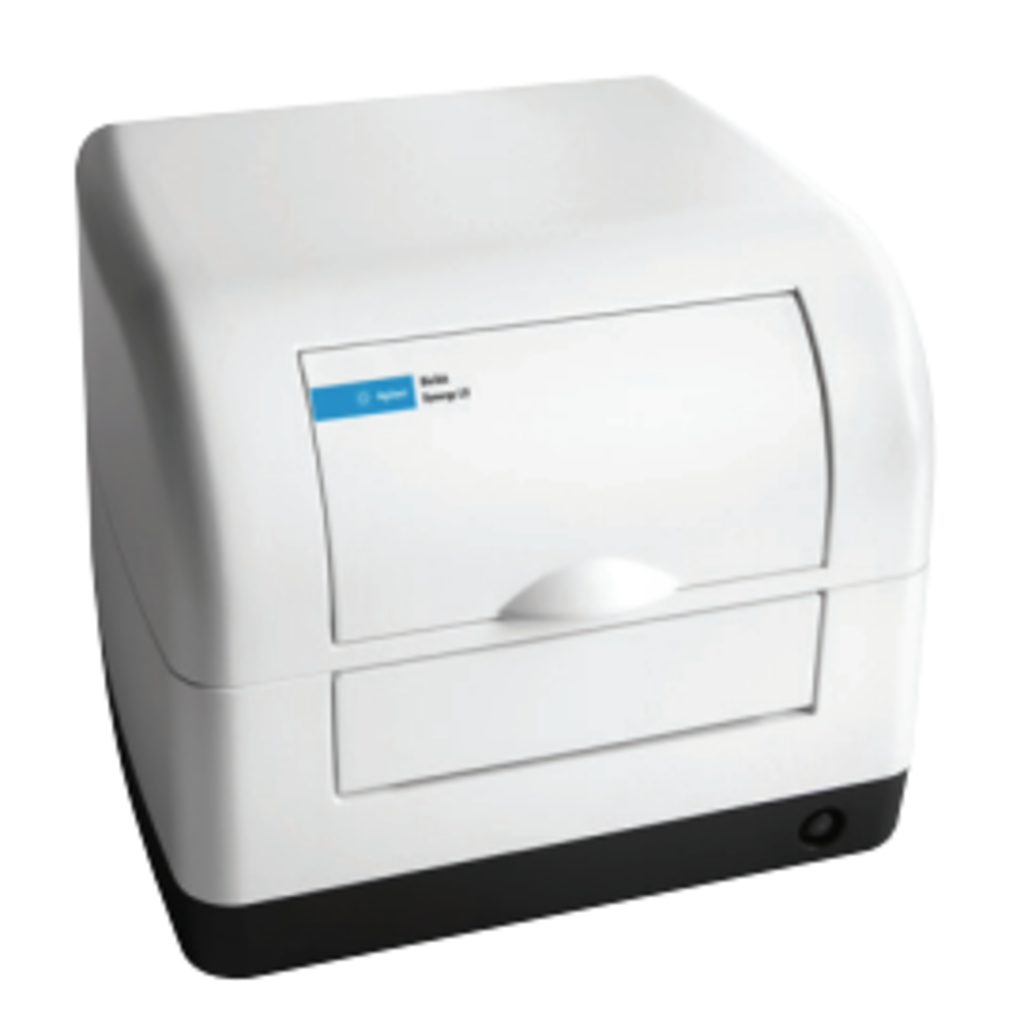
BioTek Synergy LX plate reader
The BioTek Synergy LX is a multimode plate reader with a continuous wavelength selection for UV-Vis absorbance from 200nm to 999nm in 1nm increments. The machine can also be used for detection of top luminescence and fluorescence (red, green, and blue) by switching out high-blocking filters. The system can analyze numerous common microplate assays including nucleic acid and protein quantification, ELISA and fluorescence ELISA, BCA and Bradford assays, and cell viability assays. Furthermore, the system can be used for endpoint, kinetic, area scanning, and absorbance spectral scanning with data easily exported into excel file formats. Assays can be performed using a variety of commonly used microplates in various sizes, 6- to 384 wells, including the BioTek Take3 microvolume plates. The machine can also shake the plates in a linear, orbital, or double-orbital manner before reading samples. The software used for the Synergy is the same software used on the Cytation 5 machine allowing for easy protocol transfer between both instruments.
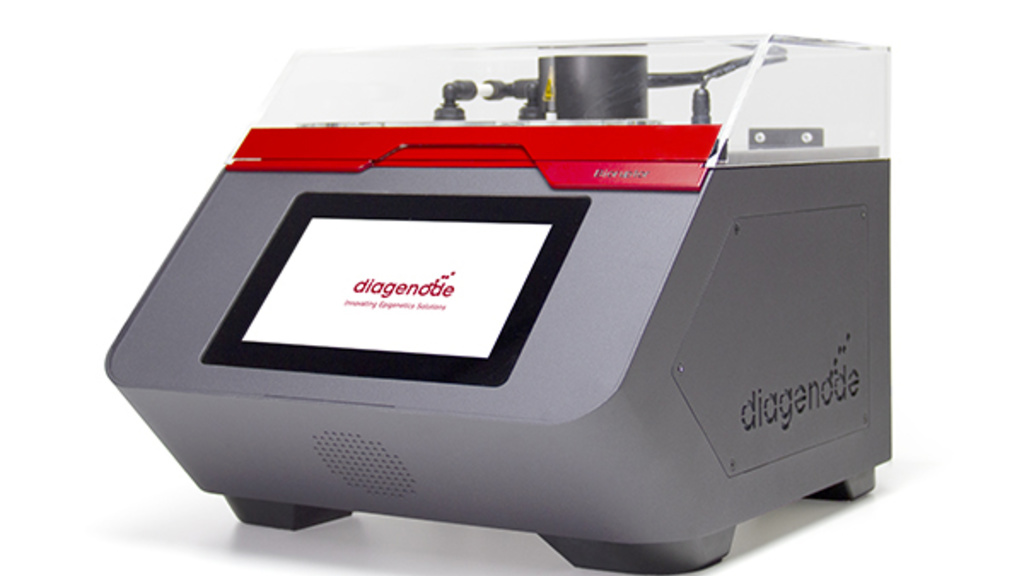
Diagenode Bioruptor Pico
The Bioruptor Pico is an all-in-one sonication or shearing system capable of shearing samples from 150 bp to 1kb in sample volumes of 20ul to 2ml. The system can process 6 to 16 samples simultaneously and has a built-in cooling unit for precise temperature control. This system can be used for a variety of applications including chromatin, DNA, and RNA shearing, FFPE DNA extraction, protein extraction from tissues and cells, and protein aggregation studies.
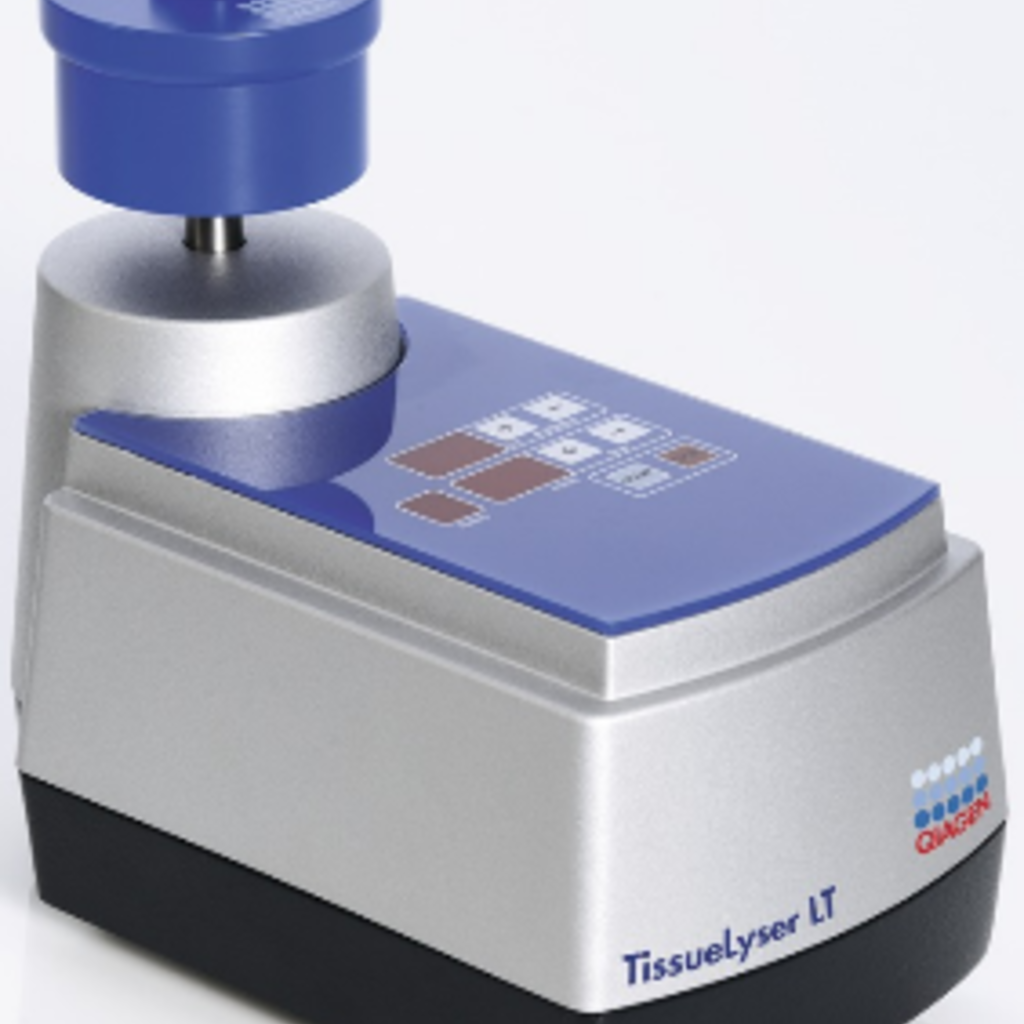
Qiagen TissueLyser LT
The Qiagen TissueLyser LT is a small bead mill that provides fast, effective disuption of up to 12 samples at the same time.
Simultaneous disruption and homogenization is achieved through high-speed shaking of samples in 2 ml microcentrifuge tubes with stainless steel or glass beads.
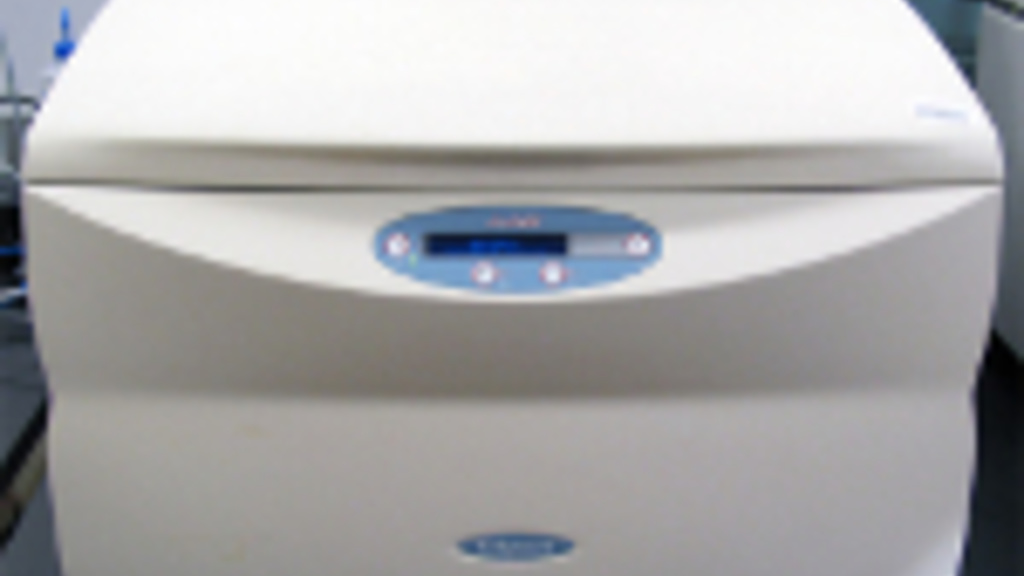
LI-COR® Odyssey Classic Infrared Imaging System
The LI-COR® Odyssey Classic Infrared Imaging System is a laser-based imager used to detect and quantify fluorescence signals for Near-infrared Fluorescent Western Blots, In-Gel Western Assays, In-Cell Western Assays, Electrophoretic Mobility Shift Assays, RNAi Analysis, Tissue Section Imaging, Reporter Gene Assays, and Nucleic Acid Gel Documentation. This instrument is equipped with two infrared channels allowing one to probe two separate targets in the same experiments or use the second channel for normalization.
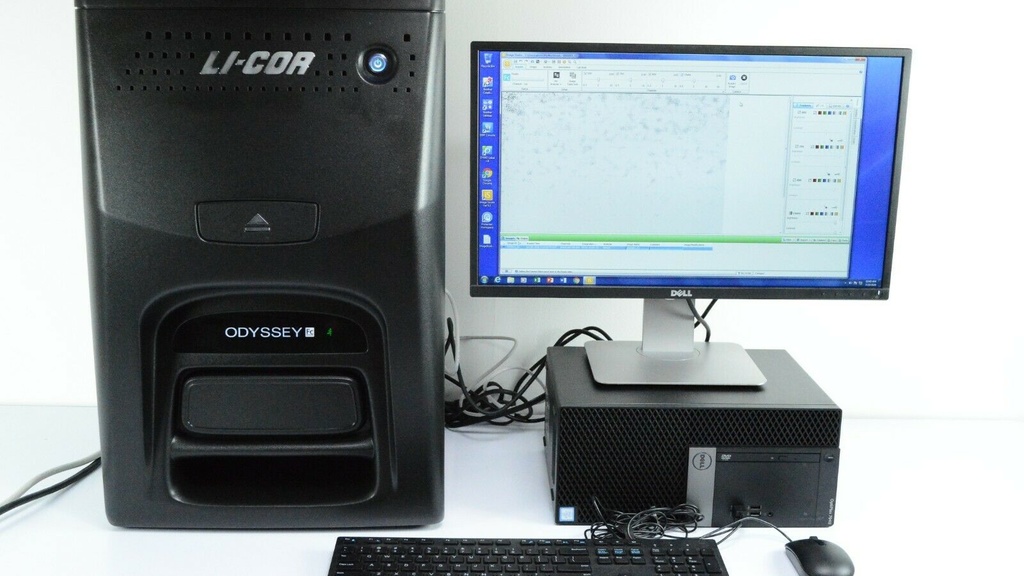
LI-COR® Odyssey Fc Dual Mode Imaging System
The LI-COR® Odyssey Fc Dual Mode Infrared System is a CCD-based imager that features two solid state laser diodes (685 and 785 nm) and a low-noise CCD camera for detection of two channel near-infrared fluorescence and chemiluminescent signals. Applications include: Western Blots (chemiluminescent, two-color infrared, and in-gel), protein detection (Coomassie-stained gels), and nucleic acid detection (SYBR-family stains). For scan documentation and data analysis, the system uses the Image Studio Software.
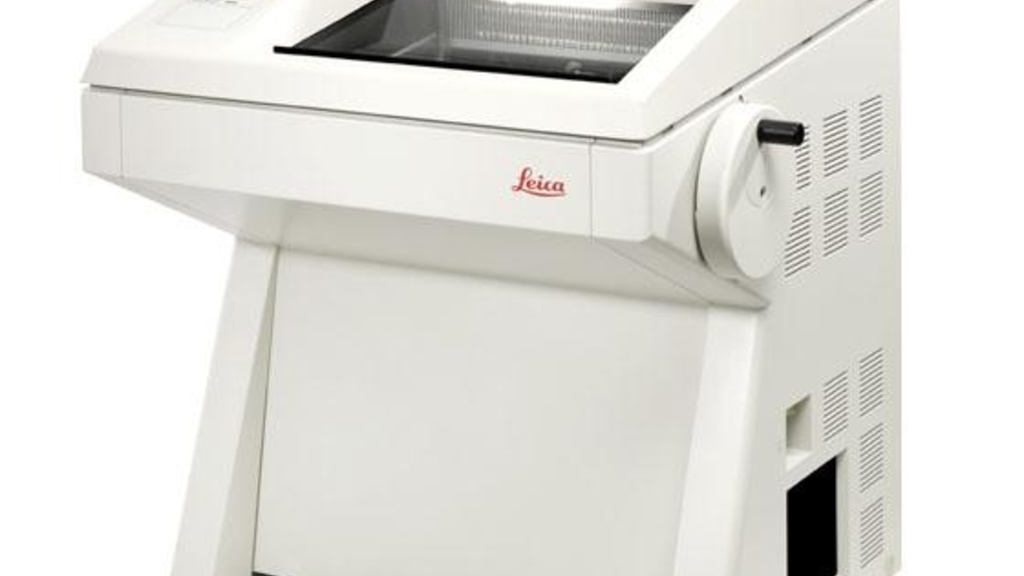
Leica Cryostat CM3050 S
The Leica Cryostat is a motorized tissue sectioning system that can serially cut specimens with section thickness from 0.5 to 300um with a high degree of reproducible thin sections. The system can be used manually to do individual sections or to do a series of sections automatically. There are coarse feed and trim modes to help orientate your sample for sectioning. The machine has a large cooling chamber with a rapid freezing shelf that can accommodate multiple samples and an independent temperature-controlled specimen head. Both the cooling chamber and specimen mounting head can have the temperature set to 0°C to -40°C and -10°C to -50°C, respectively. The system also has an anti-roll plate and an adjustable blade holder which allows you to adjust the angle and horizontal position of the blade. The system requires model-specific specimen mounting chucks and disposable blades which are available for use in the facility.
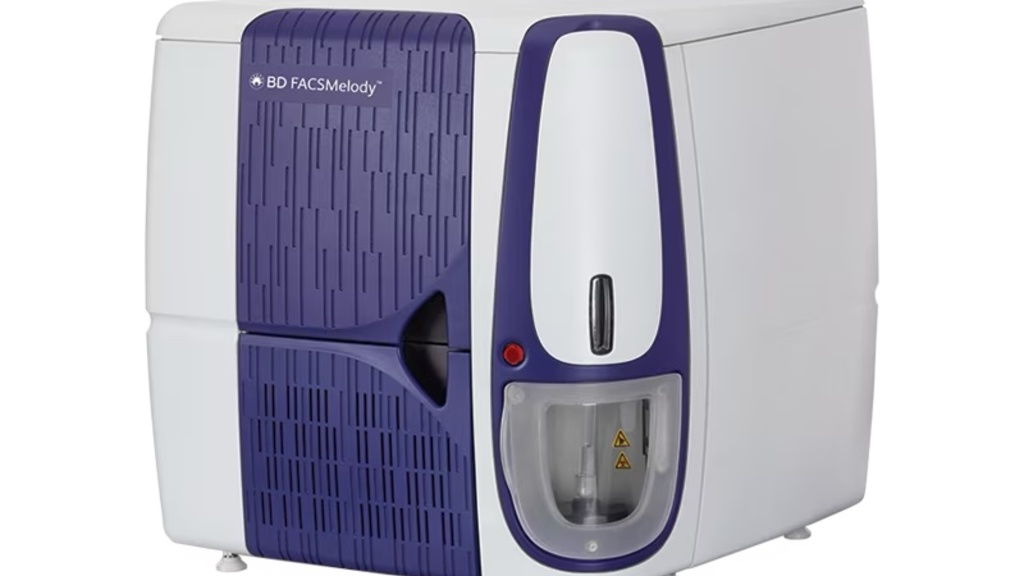
BD FACS-Melody cell sorter
The BD FACS-Melody cell sorter is a benchtop flow cytometer capable of 4-way cell sorting. The system has a fixed-alignment flow cell separate from a 100um reusable sort nozzle. The sort speed of the system is 34,000 drops per second with an average of 10,000 events per second. Cells can be sorted by yield (two cells, one of interest), purity (two cells, both of interest), or single cell into 1.5ml, 2.0ml, or 5.0ml tubes, 6 to 384-well plates, and microscope slides. The collection holders can also be temperature controlled by a water recirculation unit allowing samples to be sorted at 4°C, 22°C, 37°C and 42°C. In addition to forward and side scatter detection, our system can detect up to 8 different colored fluorophores including GFP, DAPI, PE, PerCP, DsRed and mCherry using three fixed alignment lasers: 405nm-violet, 488nm-blue, and 561nm-yellow/green. The system is also equipped with an aerosol management option that evacuates the sort collection chamber through a 0.01um ULPA filter to trap aerosol particles during the sort process.
See services for sample submission procedures.
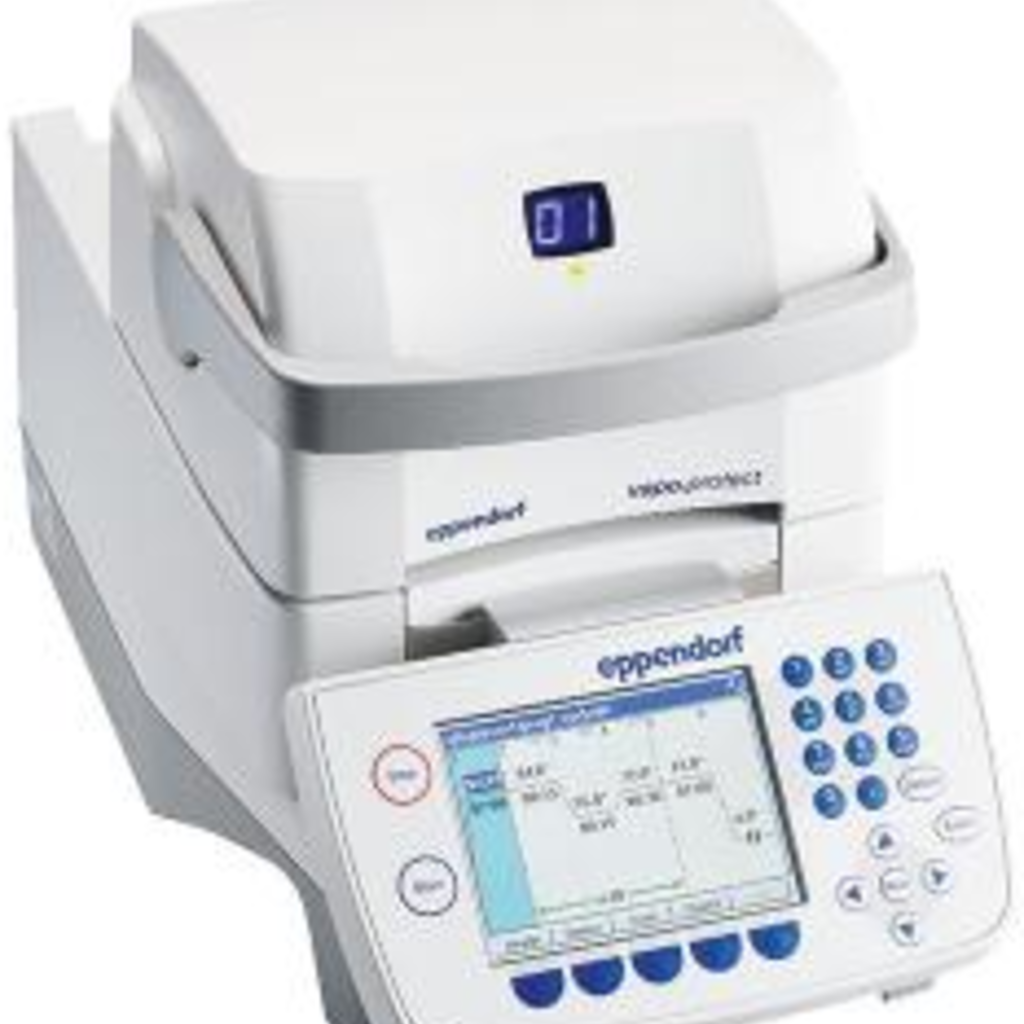
Thermal Cycler - Eppendorf MasterCycler Pro (2 units)
The Eppendorf MasterCycler Pro features an easy-to-use interface with graphical programming, SteadySlope gradient technology, Vapo-protect lid technology, fast heating (4 C/second) and cooling (3 C/second) rates, and block uniformity of +/- 0.4 C. The gradient option of the MasterCycler Pro features SteadySlope technology to ensure that the heating and cooling ramp rates are identical in both gradient and normal operation. Thus, you can expect identical temperature control characteristics in both optimization and routine experiments. Vapo-protect lid technology is used to reduce evaporation and increase reproducibility.
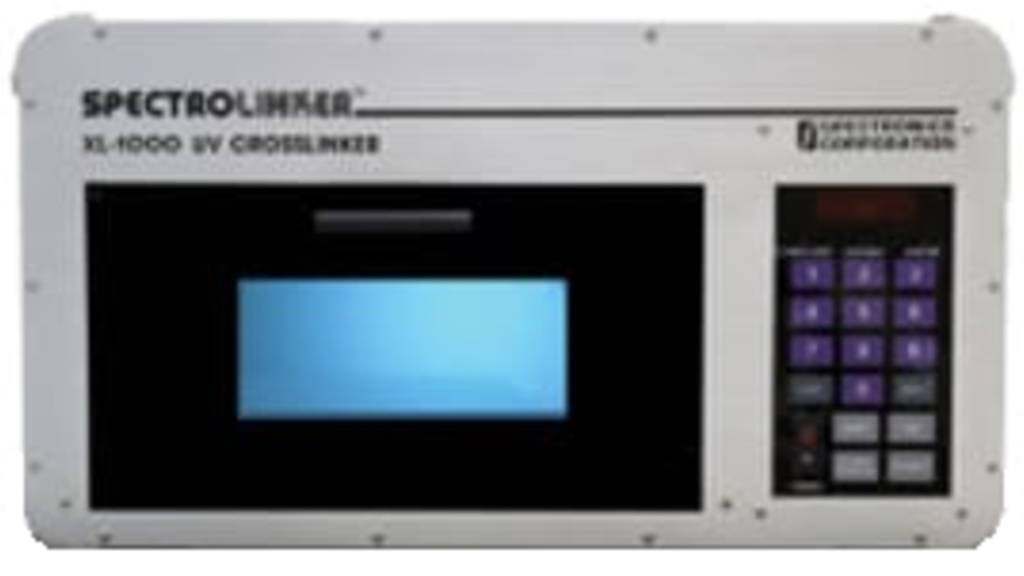
Spectronics SpectroLinker XL1000
The XL1000 is designed to monitor UV radiation and self-adjust to variations in UV intensity. All Spectroline UV crosslinkers feature a "smart" microprocessor controller and unique true UV monitoring circuitry to enable users to get error-free results with speed, accuracy, and safety. Covalently binds nucleic acid sequences and hybridization membranes in 30 seconds or less. Ensures optimum nucleic acid membrane binding even when UV output varies.
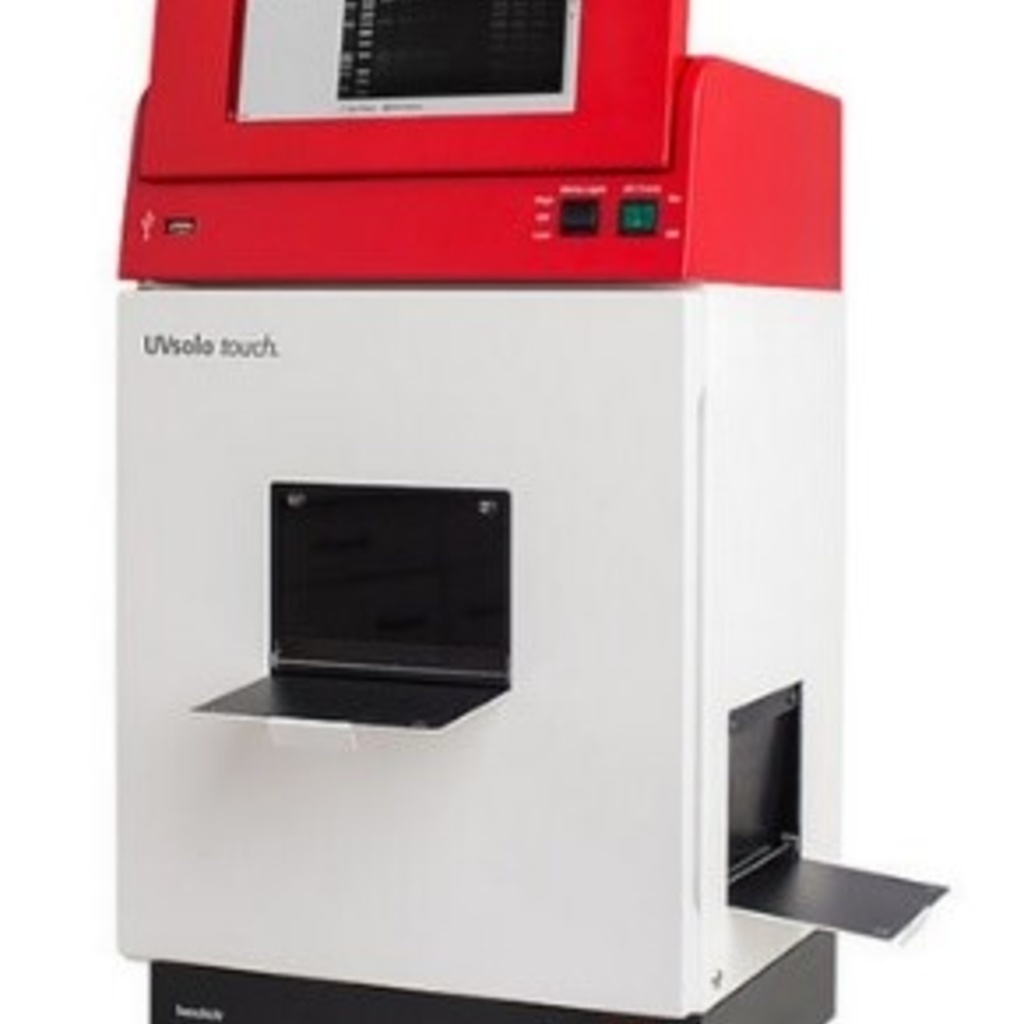
UVP UVsolo touch – Gel Documentation
The UVP UVsolo touch is a compact, easy-to-use, stand-alone system for gel documentation.
It is designed to acquire gel images easily and without any need for training. Thus, it is ideal for multi-user laboratories and practical trainings.
The system is controlled by a touch screen with intuitive image acquisition software.
The main application of the UVP UVsolo touch is saving and printing gel images. VisionWorks software allows for gel analysis.
